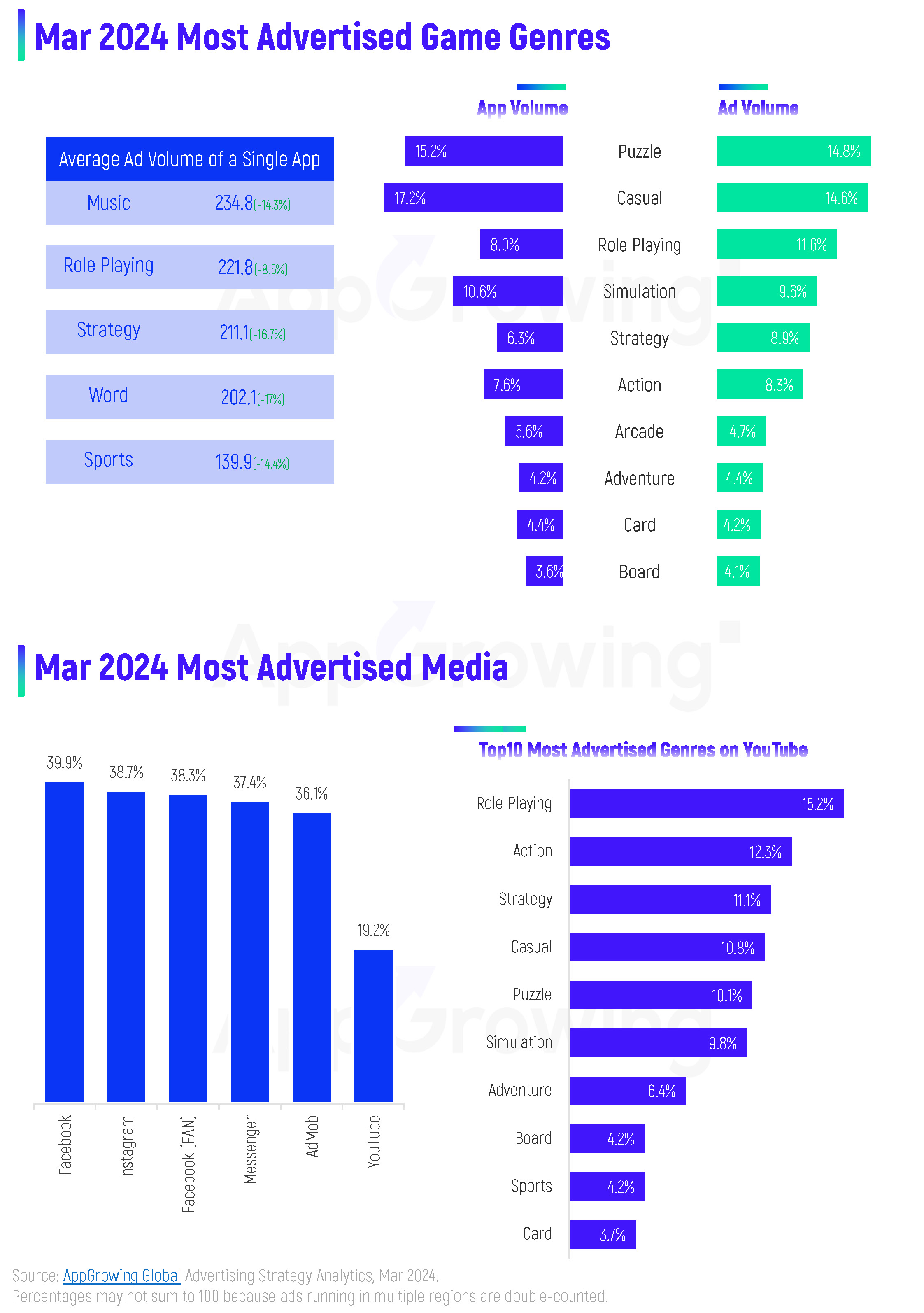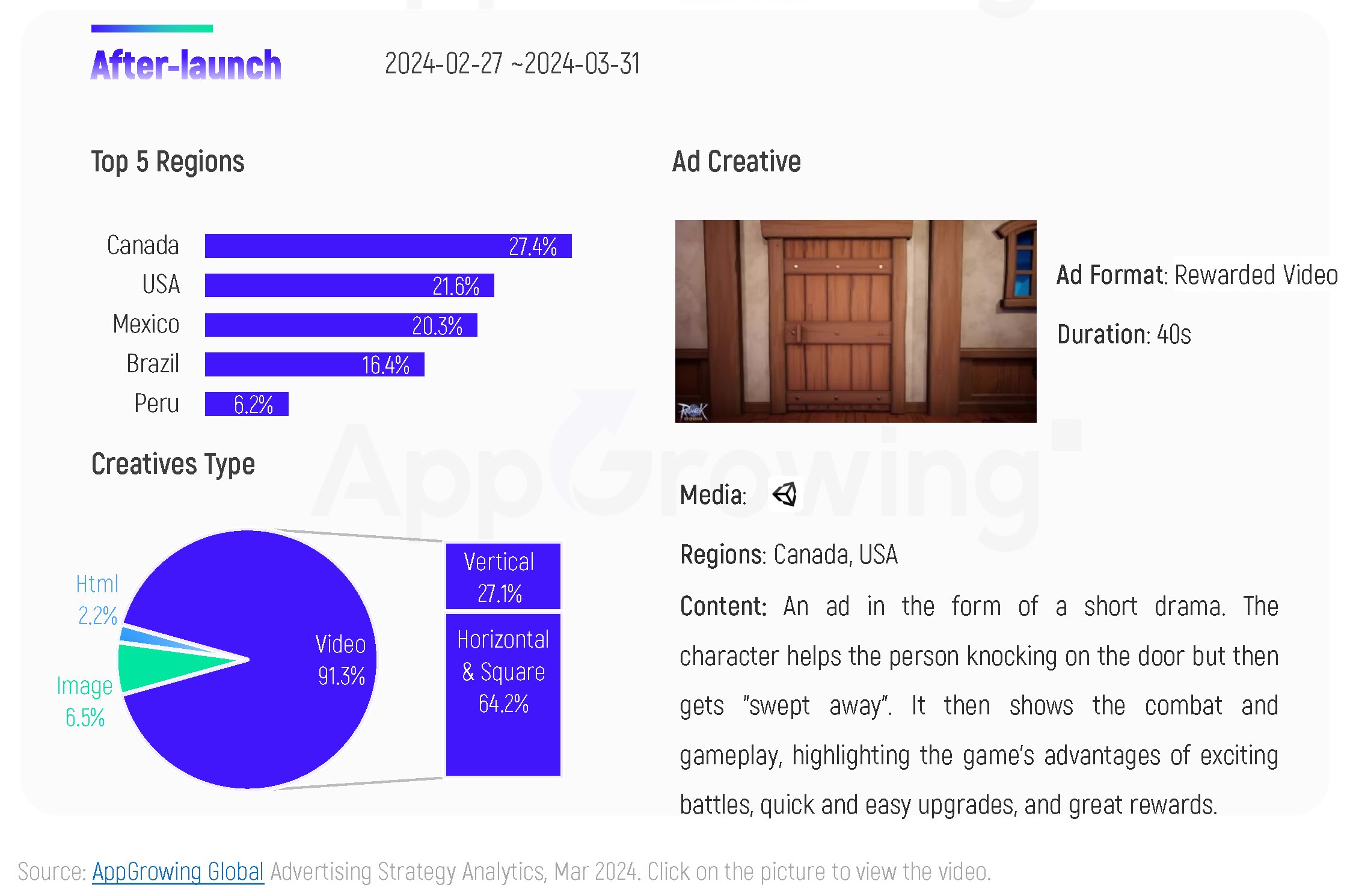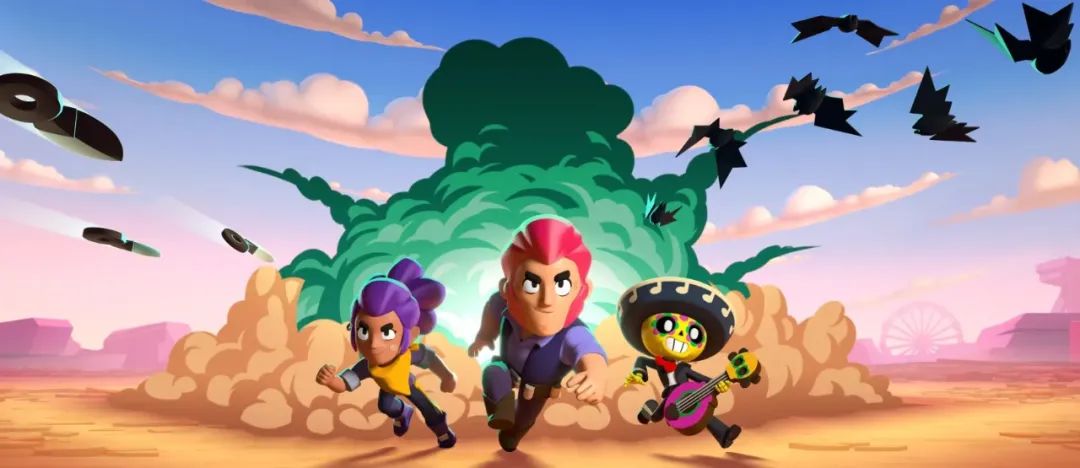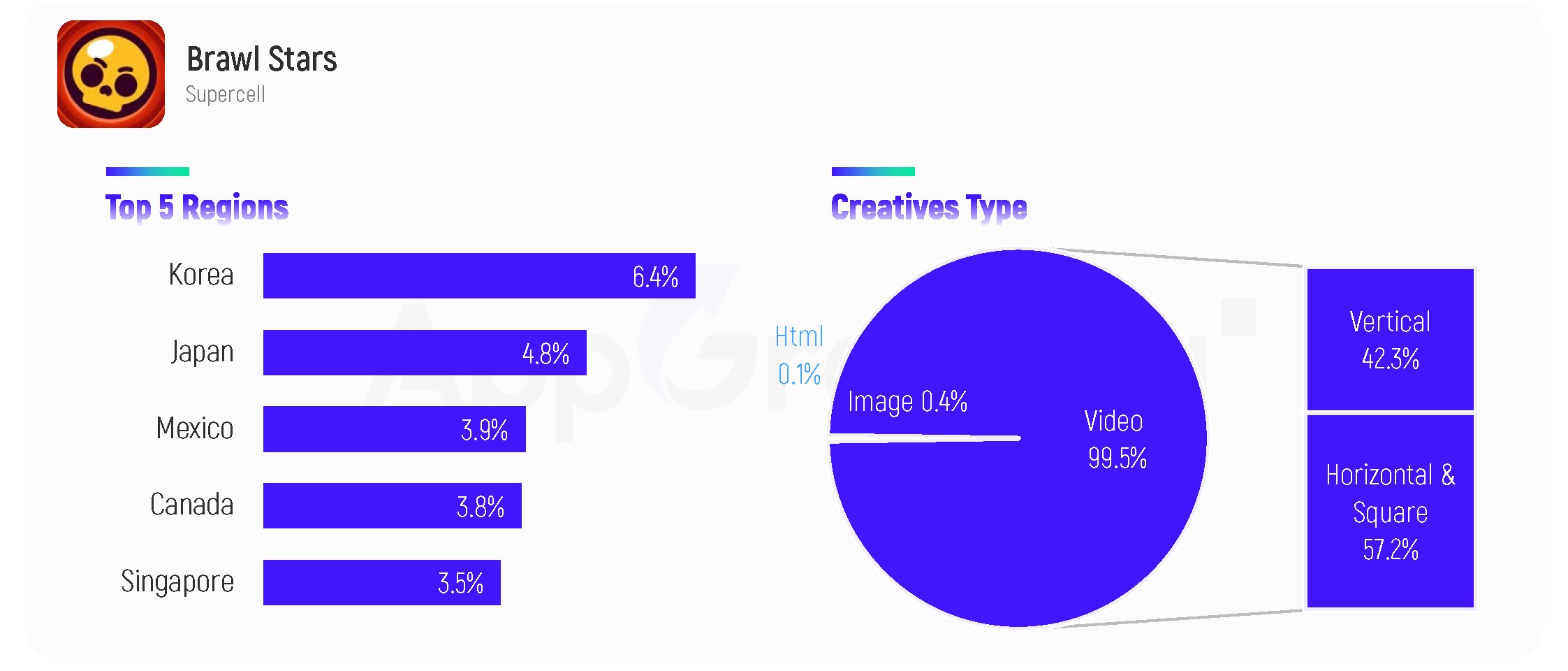Here is AppGrowing's analysis of the global mobile game advertising markets in March 2024, based on advertising data from 25 global media platforms in 50 countries/regions.
01 Advertising Trend
In March, the weekly mobile game ad volume was above 2M. App volume remained above 25K, with increased competition. Creative volume was stable and grew slightly, above 500K in a single week.
Both ad volume and app volume peaked at the beginning of the month. Over 1.77M ads on March 3, a significant increase from February. App volume peaked at 22,870 on March 4th.
Looking at the markets, the Top 3 are North America, Southeast Asia, and Western Europe. North America accounted for 33.9% of ad volume. Latin America, Japan & Korea also accounted for more than 20% of the ad volume, similar to that in February. Specifically, the Top 5 regions were the USA, Germany, France, Canada, and the UK, showing that Europe and North America were the main advertising battlegrounds for games in March.
Regarding categories, Puzzle remained the Top 1 in terms of ad volume, with 14.8%, and the Top 1 in terms of app volume was still Casual, with 17.2%. Outside of the two, Role Playing took the Top 3 spot in ad volume and Simulation took the Top 3 spot in app volume. The Top 5 in terms of average ad volume for a single app were Music, Role Playing, Strategy, Word and Sports, all of which declined from February.
On the media side in March, Meta Ads saw a significant increase in ad volume share. Facebook was the Top 1 in terms of ad volume, while AdMob ranked 5th. On YouTube, Role Playing, Action, Strategy, Casual, and Puzzle are the Top 5 in ads, while the hardcore category has a relatively higher share.
02 Most Advertised Games
In terms of regions of mobile game developers in March, China's Mainland remained in first place, with its share of ad volume growing to 37% and its share of app volume at 22.4%. Vietnam was still second in terms of ads, but its share fell to 10.1%, while it ranked 3rd in terms of app volume. France took 2nd place in app volume with 11.6%.
SayGames reigned as the most advertised developer. The Top 2-4 are HOMA, IGG, SPGame, and Playrix.
Take a look at the Top 30 most advertised mobile games in March. MONOPOLY GO! returned to the No. 1 spot, followed by Lords Mobile and BlockBlast!. SPGame's two new games actively advertised, Pandora's Fate Prophet took the No. 5 spot, and 세널라: 이터널스 (the Korean version of Source Evolution) came in at the No. 9 spot. In addition, XD GAMES' self-developed new game Go!Go!Muffin came in at No. 15.
Leiting Games' Dragon POW! was the No. 3 pre-registered game on App Store, focusing on Europe, America, and Southeast Asia. Seasun's 《劍俠世界:起源 (JX World: Origin)》 broke into the Top 8 on both lists, with pre-registrations in Hong Kong & Taiwan of China, Malaysia, Singapore and similar markets targeting the overseas Chinese.
03 Mobile Game Advertising Case Analysis
Case 1: Ragnarok Origin: ROO
According to AppGrowing, Korean developer Gravity's Ragnarok Origin: ROO kicked off pre-registrations and advertising in Europe, North America, Latin America, and other markets last December. The game was officially launched on February 27 this year.
Ragnarok Origin: ROO is a sequel mobile game to the Ragnarok Origin IP. It is developed by Chinese developer Huanle Entertainment authorized by Gravity. The gameplay is a classic MMORPG, and the art is in a cute cartoon style. The game was previously released in Hong Kong, Macao & Taiwan of China. Now, it is focusing on the North American market.
The official launch of the game saw a boost in the share of video creatives to 91.3%. In addition, HTML creatives appeared. It had a larger overall ad scale.
As for the ad creative, there is not much difference between the creative strategies of Ragnarok Origin: ROO before and after its launch. The game targets the European and North American markets, but the "RO" IP is less appealing to players in North America and Latin America. Therefore, the advertising campaign adopted a "generic" solution, mostly emphasizing the social system of MMO mobile games. They often use the framework of short dramas.
For example, in the opening sitcom, the boy fails to confess his love for being "poorly equipped and dressed". Then the scene shifts to character customization and battle upgrades, and finally, he succeeds. The ad focuses on socialization.
When it was launched, the game used the same formula of short dramas for this ad creative. The character helps the person knocking on the door but then gets "swept away". It then shows the combat and gameplay, highlighting the game's advantages of exciting battles, quick and easy upgrades, and great rewards.
Case 2: Brawl Stars
Brawl Stars is the fifth product of the famous game publisher Supercell. It is a MOBA-like light competitive mobile game that has been launched for more than 5 years so far. The game's revenue declined significantly from 2022 to 2023 but started to pick up this year. The Korean market has seen particularly strong growth. According to SensorTower, the global DAU of Brawl Stars stabilized at over 50M in March.
In order to save Brawl Stars from losing users, Supercell optimized the gameplay and content. It removed the original "Open Treasure Chest", optimized the battle pass, and introduced a new "Open Treasure Chest" gameplay, which effectively improved players' playing and paying experience. According to AppGrowing, Brawl Stars has significantly expanded its ad campaigns this year, with ads continuing to grow from February to March.
From the market point of view, the Top 5 regions of Brawl Stars in March were Korea, Japan, Mexico, Canada, and Singapore, with Japan & Korea dominating. The creative type is basically video, accounting for 99.5% of the total, of which horizontal and square accounted for 57.2%.
Creative content-wise, Brawl Stars mostly focuses on the art style. It also had many content utilizing live-action elements to appeal to light gaming favorites and pan-players.
The video begins with nostalgic Celluloid-style hand-drawn animation. The game's character narrates the game's content. The screen then shifts to a combat demo, focusing on appealing to players interested in Brawl Stars' cartoon art style.
Most of the real-life creatives incorporate realistic scenes that show socialization and competition. For example, the video engages viewers with live action. The man puts a cactus and a hot dog together and associates them with characters in the game. The scene then shifts to a battle between the two characters.










